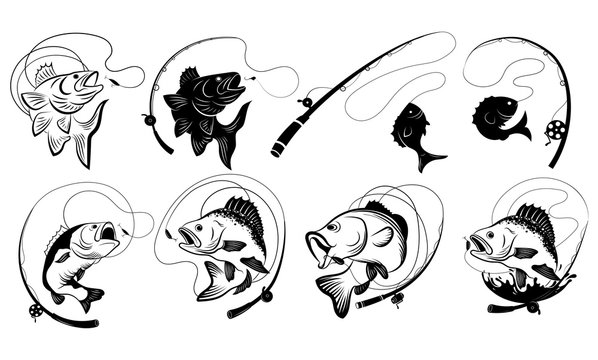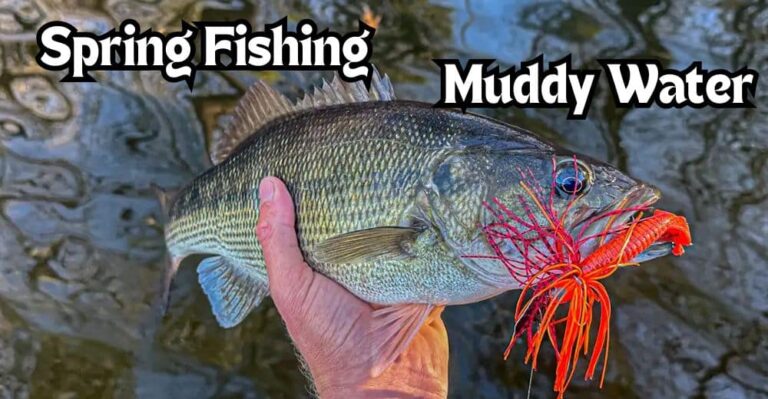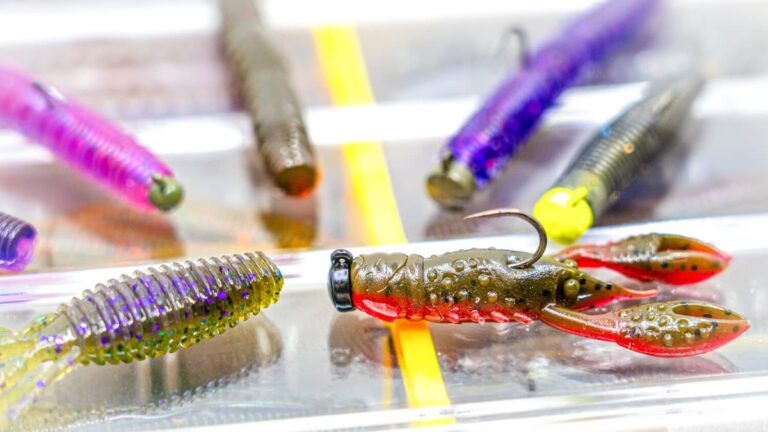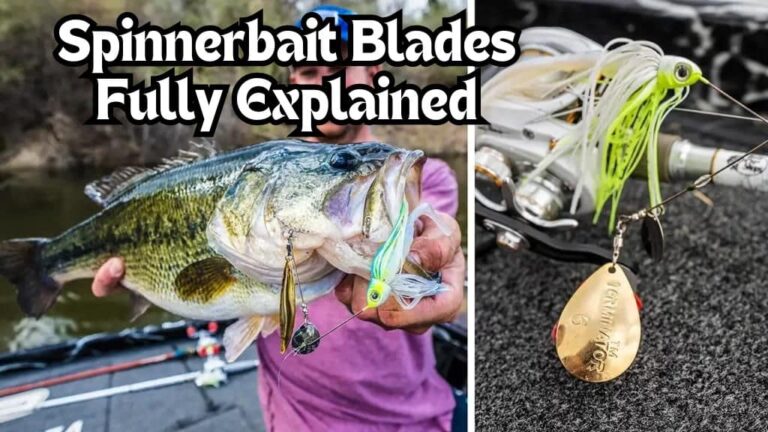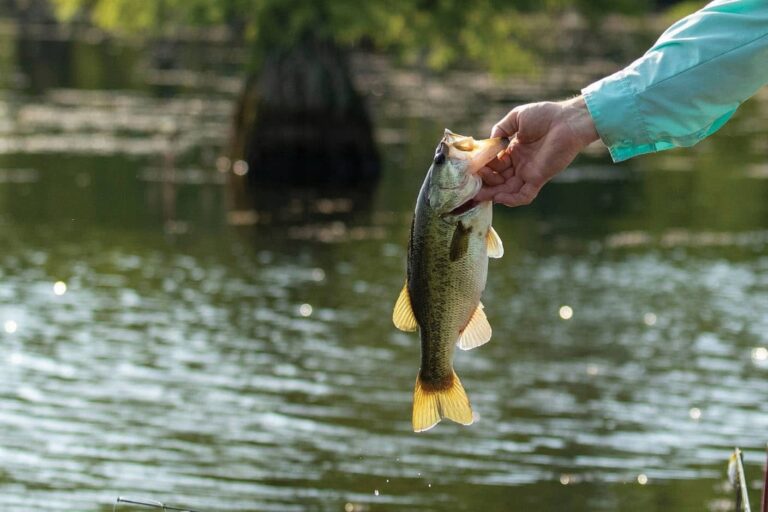How to Skip a Baitcaster
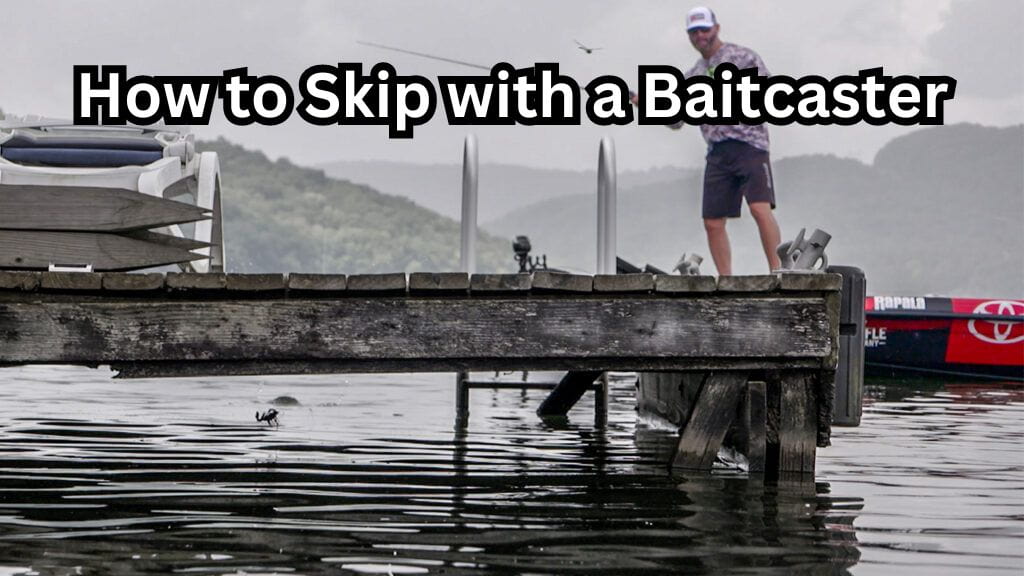
Skipping is a casting technique that you absolutely must be able to do.
The good thing is that it’s pretty easy to learn and you can get good at skipping very quickly.
And if you want to throw bigger, more aggressive lures back up under cover, you’re going to need to know how to skip a baitcaster.
Reel Settings for Skipping
Your reel settings are actually going to be about the same as ever for skipping.
These settings make skipping easier and also make it convenient to switch between skip casts and traditional casts.
Spool Tension

Turn the spool tension knob until your bait slowly falls. When you are just learning to skip, tighten up the knob a little extra so that your bait barely falls.
As yo get better, loosen the knob up slowly. Once you get an hour or two of practice skipping, you can adjust the knob to whatever you would normally set it at.
Brakes

On the other side of your baitcasting reel, you will find the brake system.
Start by setting the brakes to about 75% of the way up. Some reels on only have 4 brakes, and some have as much as 20.
So don’t worry about the exact number, just set it about 75% to the max.
Again, as you get better, back off the brakes a bit so that you can make longer, smoother skips.
Casting Motion for the Skip
The casting motion is certainly the most important part of skipping a baitcaster. I’d say it’s about 80% of the whole process.
Roll Cast

Skipping a bait with a baitcaster is a roll casting motion. Holding your rod out to your dominate side, roll your wrist to swing the lure in a circular motion.
The roll casting motion loads up the rod so that you can put lots of power into the swing while still keeping the rod tip low to the water.
Release at the Bottom

The goal when skipping a bait is to cast it as parallel to the water as possible.
When you release your thumb at the bottom of the roll cast motion, the bait will fly forward in a straight motion.
With enough speed, this will cause to the lure to bounce off the water just like a skipping stone.
Tuck the Elbow
You want to keep your casting, or dominate elbow tucked tightly to your body. Imagine you are holding a dollar bill in your armpit.
Don’t open your elbow until the bait has finished skipping and you are ready for the retrieval.
Lift Your Rod Tip
While the bait is skipping across the surface, lift your rod tip up to prevent excess slack in your line.
You don’t want to create tension on the line, but you should lift your rid tip up so that you keep the line off of the water’s surface.
Be Patient
Before getting started, keep in mind that you are going to struggle.
You are going to backlash and you aren’t going to skip very well at first.
So don’t give up, be patient, and keep practicing until you gain confidence in it.
Even the best bass anglers get backlashes from time to time. Don’t worry or get discouraged, just keep practicing.
Tape Your Spool
Speaking of backlashes, there is a simple trick to minimize these. Take a short cast about 20-30 feet out.
Then put a small piece of tape on your spool. Reel back up the line and start practicing.
When you get a backlash, the tape will prevent the line from unspooling beyond the tape.
This trick will make it very easy to untangle the backlashes and save you a lot of money when getting started with skipping a baitcaster.
Best Baits for Skipping

It is important to understand that you aren’t going to be able to skip every lure.
In fact, most lures just can’t really be skipped. Baits that will skip are typically flat, single hooked, and at least partially soft plastic.
Any lure with treble hooks is not going to skip. The free swinging hooks catch on the water’s surface and stop the bait in it’s tracks.
Soft Plastics
Soft plastics are by far the easiest to skip. They are very smooth and light weight baits that bounce of the water very well.
When using a baitcaster, you will need to add some weight to these soft plastics.
A pegged Texas rig or a belly weighted hook are the best ways to do that when skipping.
Jig
The jig is probably the most popular skipping bait out there. The jig is already made for heavy cover, so it is perfect for skipping back into brush or under docks.
Just make sure that you use a very flat and bulky trailer to give the jig more surface area to skip over the water with.
Of course, it also helps to use a lighter weight jig when first learning, so stick to a 1/4 or 3/8 oz jig.
Frog
Frogs are amazing skipping lures. Not only are they made with a soft material, but they are also hollow.
That hollow body design makes it super easy to bounce a frog off the water and skip it very far under cover.
When to Skip a Baitcaster
Skipping is a way to get your bait back under overhanging trees, docks, bridges, and other objects that prevent a classic lob cast.
Bass will often suck way up under that stuff to get in the shade. This makes skipping especially effective during the hot summer months.
However, bass always tend to get under thick cover for other reasons, so don’t limit your skipping to just the summer.
Additional Tip: Use a Spinning Rod First
Before ever attempting to skip a baitcaster, I highly suggest that you first use a spinning reel.
Spinning rods and reels are much easier to skip with and because you don’t have to worry about backlashing or adjusting any reel settings.
Tie on a weightless Senko or fluke and it will skip incredibly easy.
After 30-45 minutes of practice with a spinning setup, you will learn the basic movements and bait trajectory needed to effectively skip.
Then pick up the baitcaster and you will already know the proper technique.
It is much easier to transition this way compared to immediately trying to use the baticaster.
Reeling this In
Mastering the art of skipping with a baitcaster opens up a world of possibilities in angling.
With the right reel settings, casting motion, and choice of baits, you can effectively navigate tight spaces and reach hidden spots where bass love to lurk.
While it may take some patience and practice to overcome initial challenges like backlashes, the rewards in precision casting and lure placement are well worth the effort.
Remember to start with a spinning rod if you’re new to skipping, as it provides a smoother learning curve before transitioning to the baitcaster.
Ultimately, adding skipping skills to your repertoire enhances your versatility as an angler and increases your chances of landing that elusive trophy fish.

